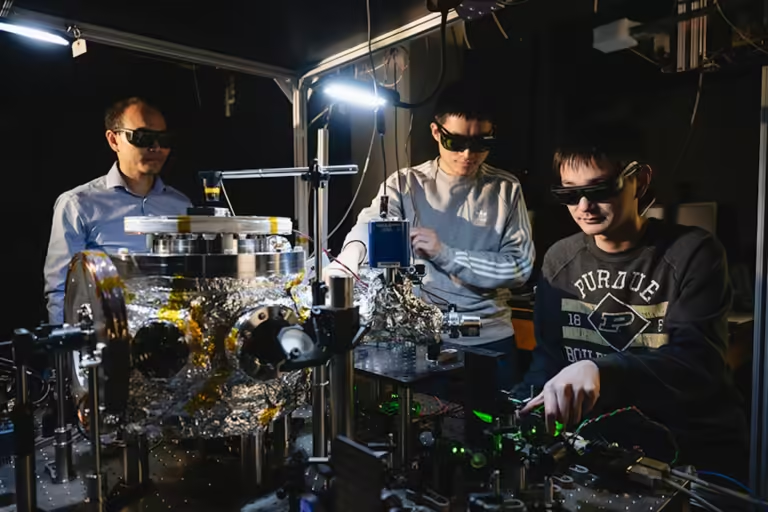Somewhere in the quantum realm, a little frenzy is brewing: Researchers have developed a tiny, floating diamond the size of 350 strands of human DNA in diameter, which spins more than a billion times per minute and reflects light like a disco ball.
This little party decoration was created by scientists at Purdue University, who are using it to take ultra-precise measurements that help elucidate the relationship between quantum mechanics and gravity. There have been previous attempts to levitate nanodiamonds, but they require incredibly precise conditions to actually work.
“Previously, experiments with these suspended diamonds have struggled to prevent losses in the vacuum and read out the spin qubits,” Tongkang Lee, professor of physics and astronomy at Purdue University, said in a statement. “However, in our study, we have successfully levitated diamonds in high vacuum using a specialized ion trap. For the first time, we have been able to observe and control the behavior of spin qubits in suspended diamonds in high vacuum.”
Qubits are the quantum equivalent of computer bits and the fundamental unit of quantum information. They use semiconductor materials to capture individual electronic charges and their associated spin. To create the conditions needed to study how the diamond’s rotation affects spin qubits, the researchers had to spin the diamond at a dizzying speed of 1.2 billion revolutions per minute.
The researchers achieved this by using photolithography, the same technique used to manufacture computer chips, to create gold-plated sapphire wafers 300 nanometers thick. The diamonds themselves, with an average diameter of 750 nanometers, were produced using intense pressure and high temperatures to speed up the natural process that produces the sparkling stones. The diamonds contained tiny structures that could house electron spin qubits.
To measure the diamond’s spin, a green laser was shone on it, causing it to emit red light, from which the researchers could determine the spin state of the electrons. Another laser was used to monitor the nanodiamond’s rotation. As it spins, the nanodiamond scatters the infrared light of the laser like a disco ball.
The new technique is described in a journal article: Nature Communications, The researchers said the technique not only enables the study of esoteric concepts such as quantum physics, but also has practical applications, such as in precision accelerometers and electric field sensors.
Unfortunately, there was no word on whether the team also managed to invent tiny glow sticks.


1 Comment
Thanks for sharing. I read many of your blog posts, cool, your blog is very good.